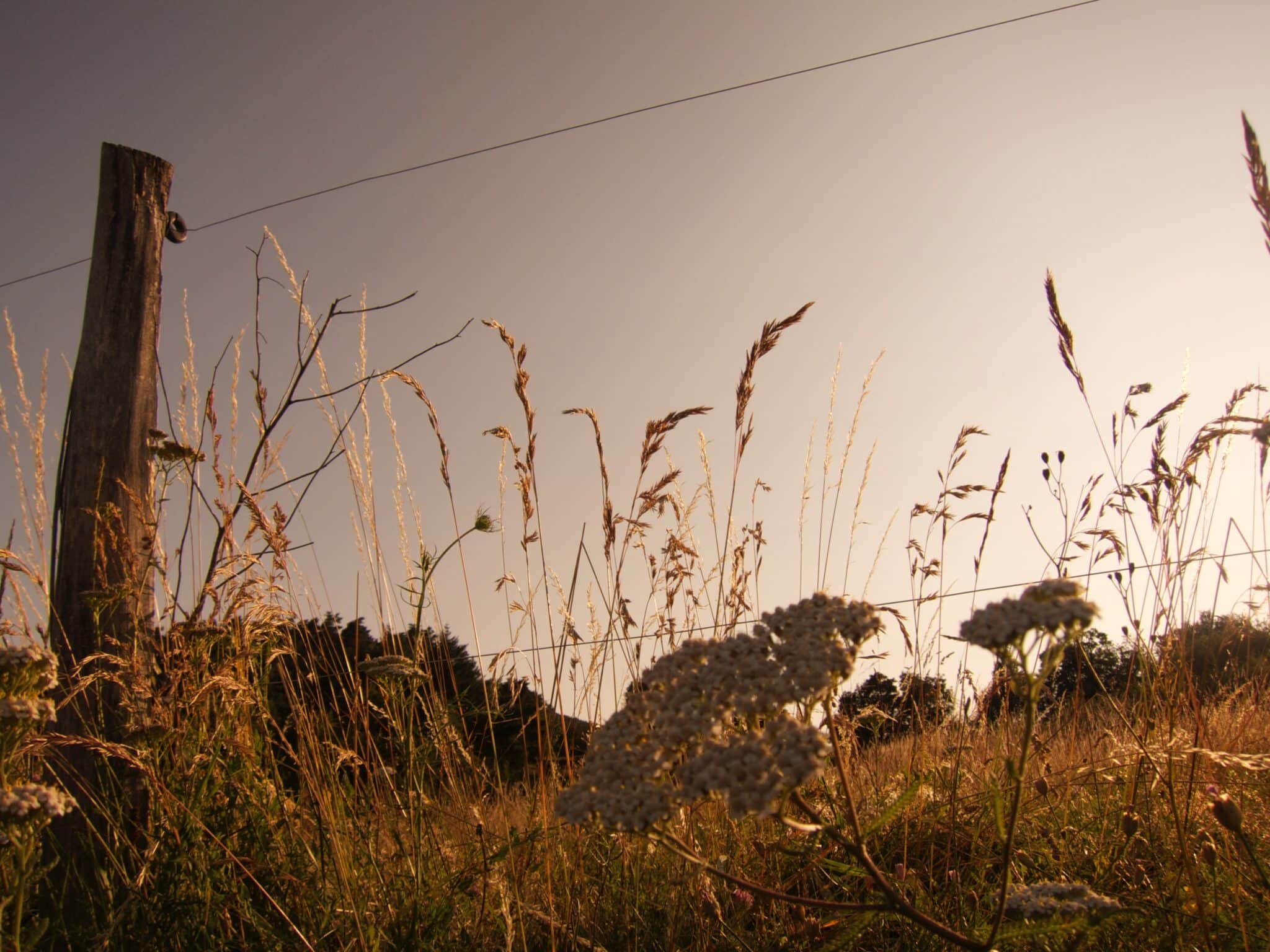How to Get Rid of Johnson Grass

Johnson grass is an invasive weed species that can take over your lawn if you aren’t careful. It is a type of grass that shouldn’t be planted in yards. Even the most experienced gardeners will find themselves battling the grass if they plant it in their yard. However, there are certain methods of getting rid of the grass if you ever find them on your lawn. We will discuss these methods in this guide and how to prevent them.
What is Johnson grass and how do you identify it?
Johnson grass (Sorghum halepense) is a perennial grass that creates a persistent problem in lawns, pastures, and gardens. It can grow up to five feet tall and has dark green leaves. It is a hearty plant; it can grow up to 7 feet tall. It has a thick root system that makes it difficult to remove.
This grass also produces flowers that are white or purple, which often turn into seeds. The seeds are formed in large florets and are dispersed by birds and wind. They can remain viable in the soil for up to 10 years.
The roots of Johnson grass grow as deep as 30 feet, allowing it to access water during long periods of drought. This helps it outcompete other plants for water in the soil.
Identifying Johnson grass
The first thing to look for is a large clump of dark green colored leaves. The next step requires you to check if the plant produces white or purple flowers. If there are any signs of seed production, then your lawn is infested with Johnson grass.
Johnson grass has distinguishing characteristics that set it apart from other grasses. It has a thick, tufted stalk that is green or blue-green in color. The leaves are long and narrow, and the blades are smooth on the upper surface and hairy on the underside. The seedheads are dense and spike-like, and they turn brown when ripe.
You will notice these features during the summer months when plants like Johnsongrass thrive due to warm temperatures and favorable growing conditions.
What causes Johnson grass?
Johnson grass is an invasive weed that spreads quickly. It can be spread through wind, water, or contact with other plants. The seeds of the plant are also very durable and can remain viable in the soil for many years. It spreads by seeds, root fragments, and rhizomes (underground stems).
Johnson grass can be found in many habitats, including pastures, disturbed areas, roadsides, and gardens.
Why get rid of Johnson grass?
A single stalk can produce thousands of seeds that germinate the following season if not removed first. This makes controlling this fast-growing weed challenging because one produces so much seed in such a short time period. Once established, they take over the yard and choke out other grasses in your lawn.
The seeds produce a sticky substance when wet, which makes it hard for wildlife such as birds and animals who feed off them (which spreads this seed further than just where you find it).
How to get rid of Johnson grass
Mechanical Methods
The most common way to remove Johnson grass is by using a lawnmower or string trimmer. However, this will only work if the infestation is small. If there is a large infestation, then you will need to use a manual digging tool like a shovel or hoe to remove the plants from the ground.
Chemical Methods
Apply an herbicide that contains glyphosate to the plants during late spring or early summer when they are actively growing. Spraying the plant during this time will help ensure that it absorbs the herbicide properly.
Products like glyphosate, triclopyr, and imazapyr will effectively kill the weed. However, these herbicides can also harm other plants in your yard. It is important to read the label carefully before using any chemical herbicide.
Using a post-emergent herbicide is the most effective way to kill Johnson grass. Be sure to spray the entire plant, including the leaves and stems.
Pre-emergent herbicides are not as effective against Johnson grass because it germinates so quickly. If you choose to use a pre-emergent herbicide, then be sure to apply it in late winter or early spring. The best time to use pre-emergent herbicides is before the weeds begin growing in your lawn.
Cultural Methods
One of the best ways to prevent Johnson grass from taking over your lawn is by cultural methods. This includes proper mowing height, fertilization, and irrigation practices. Keeping your lawn healthy and well-maintained will help keep Johnson grass at bay.
Manual method
The most basic way to get rid of Johnson Grass is manually pulling it out of the ground. This method works for smaller patches of Johnson Grass but can become time-consuming if you have a large patch.
To manually remove the Johnson grass, pull up the plant and its roots from the ground using your hands. You can also use gardening tools such as a garden fork or shovel to lift the plants from the soil. If you plan on using this method, make sure you have enough time and patience because it can take a while to remove all the plants manually.
Dig out larger plants using a shovel or digger, making sure you remove all roots and rhizomes so that they do not regrow from any remaining pieces left in the soil after digging.
Homemade Remedies
There are many homemade remedies that can be used to kill Johnson grass, but they have varying degrees of effectiveness. Some people say vinegar works well because it contains acetic acid, which burns the leaves of the weed. Others recommend using boiling water or a mixture of dish soap and white vinegar.
Another popular remedy is to use baking soda, which creates a salt that kills the weed. Some people also add Epsom salts to their recipe because it contains magnesium sulfate, which can help improve soil health.
When using any type of homemade remedy, it is important to test it on a small area of your lawn first to make sure that it does not harm the grass.
Preventing Johnson Grass
The best way to prevent Johnson grass from invading your lawn is by being proactive.
- Proper mowing height: Johnson grass is a tall plant that can grow up to five feet in height. It thrives when the lawn is cut short, so it’s important to keep your mower at its highest setting. Keeping your lawn healthy and well-maintained will help keep Johnson grass at bay.
- Fertilization: Applying fertilizer to your lawn will help keep it healthy and strong, which helps prevent invasive weeds like Johnsongrass from taking over.
- Irrigation: Watering regularly with a sprinkler system or hand watering will also help keep Johnsongrass away because they prefer dry conditions. How often you need water depends on how much rain falls during the year (at least once every two weeks). If there isn’t enough rainfall, then use an irrigation system such as drip irrigation to make sure the entire lawn is getting watered.
Frequently Asked Questions
Why it is difficult to remove Johnson grass by hand?
Johnson grass can grow up to five feet tall. Once it has reached maturity, its roots can extend as deep as ten feet into the ground, making removal with a shovel extremely difficult without damaging nearby shrubs or trees. Its rhizomes also spread through underground stems that sprout new shoots every few inches, meaning that one pull of the weed may not kill all its parts.
Will burning kill Johnsongrass?
The answer to this question is not a simple yes or no. Burning can kill Johnsongrass, but it depends on the intensity of the fire and how long the grass is exposed to the flames. If you are looking to use burning as a way to get rid of Johnsongrass, it is best to speak with an expert who specializes in controlled burns.
How do you pull up Johnson grass?
The most effective way to pull up Johnson grass is by hand. To do this, wear gardening gloves and dig around the base of the plant with a shovel or spade. Be sure to get as many roots as possible when pulling it out of the ground so that it doesn’t grow back again. How can you kill Johnson grass without chemicals?
How long does Roundup take to kill Johnson grass?
Roundup takes about two weeks to completely kill Johnson grass. The herbicide should be applied in late spring before any shoots appear from belowground rhizomes or stolons (runners), which are both new growths from existing plants and will often regrow if not removed first during winter months.
Conclusion
There are a couple of different ways you can get rid of Johnson grass on your lawn. Which one you choose will depend on whether you have Johnson grass growing on your lawn or if it is just a few patches that need to be removed.
An herbicide is the most effective way to deal with a small patch of Johnson grass. Herbicides have been around for years, and they aren’t anything new when it comes to getting rid of weeds or other unwanted vegetation. They help control or prevent many types of plants from growing by killing them at the root level.







